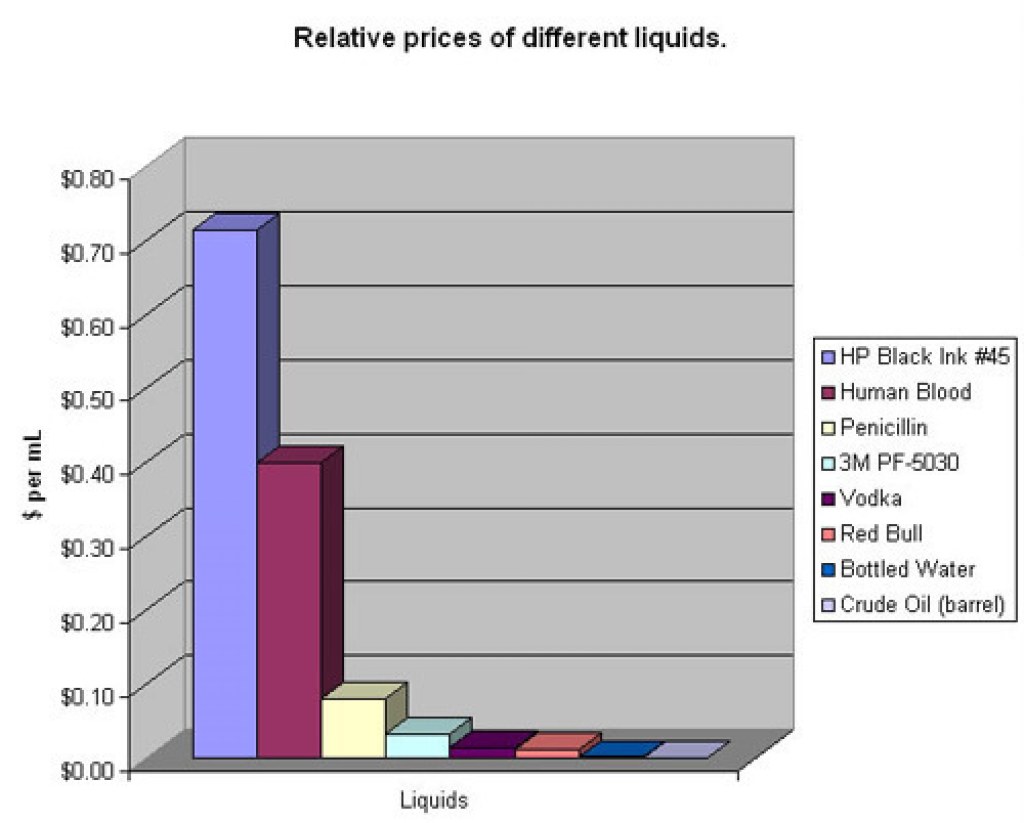Unveiling The Ultimate Showdown: Printer Ink Vs Blood – Discover The Surprising Battle That Calls For Action!
Printer Ink vs Blood: The Hidden Similarities and Surprising Differences
Greetings, readers! Today, we delve into the intriguing world of printer ink and blood. While these two substances may seem worlds apart, they share more similarities than meets the eye. In this article, we will explore the various aspects of printer ink and blood, their significance, and the impact they have on our daily lives. So grab a cup of coffee and join us on this fascinating journey!
Introduction
What is printer ink? Printer ink, also known as ink or toner, is a liquid or powder substance used in printing devices to produce text and images on paper. It consists of various pigments, dyes, and chemicals that are carefully formulated to create vibrant and long-lasting prints.
1 Picture Gallery: Unveiling The Ultimate Showdown: Printer Ink Vs Blood – Discover The Surprising Battle That Calls For Action!

Who uses printer ink? Printer ink is used by a wide range of individuals and organizations, including students, professionals, businesses, and printing companies. From printing assignments and documents to creating marketing materials and artwork, printer ink plays a crucial role in our daily lives.
When was printer ink invented? The history of printer ink dates back to the early days of printing press technology. The first commercially successful inkjet printer, which utilized liquid ink, was introduced in the late 1970s. Since then, printer ink has undergone significant advancements, resulting in improved print quality and efficiency.
Where is printer ink used? Printer ink is used in a variety of printing devices, including inkjet printers, laser printers, and 3D printers. It is widely utilized in homes, offices, schools, and print shops, making it an indispensable component of the modern printing industry.
Image Source: twimg.com
Why is printer ink important? Printer ink is essential for producing high-quality prints with sharp text and vibrant colors. It enables us to bring our digital creations to life on physical paper, whether it’s a photograph, a document, or a work of art. Without printer ink, the world of print would be dull and lifeless.
How is printer ink made? Printer ink is manufactured through a complex process that involves blending pigments or dyes with solvents, additives, and other chemicals. The precise formulation varies depending on the type of ink and the printing technology used. The result is a carefully crafted ink that delivers outstanding print quality and durability.
Advantages and Disadvantages of Printer Ink
Advantages of printer ink:
High print quality: Printer ink produces sharp text and vibrant colors, resulting in visually appealing prints.
Durability: Prints made with printer ink are resistant to fading and smudging, ensuring long-lasting results.
Wide range of colors: Printer ink is available in a vast array of colors, allowing for creative expression and accurate color reproduction.
Versatility: Printer ink can be used on various types of paper and media, including glossy, matte, and specialty papers.
Cost-effective: Printer ink cartridges are generally more affordable compared to other printing technologies, making it an economical choice for everyday printing needs.

Image Source: visual.ly
Disadvantages of printer ink:
Expensive in the long run: While printer ink cartridges may be reasonably priced, frequent replacements can add up, making it a costly investment over time.
Potential for clogging: Printer ink nozzles can become clogged if not used regularly, resulting in print quality issues and the need for maintenance.
Environmental impact: Printer ink contains chemicals that can be harmful to the environment if not disposed of properly. Recycling programs and eco-friendly alternatives are becoming increasingly important.
Limited shelf life: Printer ink has a limited lifespan, and cartridges that are not used within a certain period may dry out or become unusable.
Compatibility issues: Printer ink cartridges are often designed for specific printer models, limiting compatibility and requiring careful selection.
Frequently Asked Questions (FAQ)
Q: Can I use any printer ink in my printer?
A: No, it is essential to use printer ink that is compatible with your specific printer model. Using incompatible ink can result in poor print quality and potential damage to the printer.
Q: How can I prolong the life of my printer ink cartridges?
A: To extend the lifespan of your ink cartridges, avoid leaving your printer idle for extended periods, print regularly to prevent clogging, and store unused cartridges in a cool, dry place.
Q: Is refilling printer ink cartridges a viable option?
A: While refilling ink cartridges may seem like a cost-effective solution, it can lead to compatibility and quality issues. It is recommended to use original manufacturer cartridges or reputable third-party alternatives.
Q: How can I dispose of printer ink cartridges responsibly?
A: Many manufacturers and retailers offer recycling programs for ink cartridges. Alternatively, you can research local recycling centers or contact your municipality for guidance on proper disposal methods.
Q: Are there eco-friendly alternatives to traditional printer ink?
A: Yes, there are eco-friendly ink options available, such as soy-based ink and vegetable-based ink. These alternatives are more sustainable and have a reduced environmental impact.
Conclusion
In conclusion, printer ink and blood may seem like unlikely companions, but they share commonalities in terms of their significance, usage, and impact. Printer ink allows us to bring our digital creations to life on paper, while blood sustains and nourishes our bodies. Both substances have advantages and disadvantages, and it is essential to consider their environmental impact. By understanding the intricacies of printer ink and blood, we can make informed choices and appreciate their importance in our lives.
Final Remarks
We hope this article has shed light on the fascinating world of printer ink and blood. Whether you’re a student, professional, or printing enthusiast, understanding the nuances of these substances can enhance your printing experience and promote responsible usage. Remember, printer ink and blood may be different in composition, but they both leave lasting impressions. So print with care, and let your creativity flow!
This post topic: Printer Ink
![What to do if Printer Won't Print Yellow [Quick Fix]](https://inkg.info/wp-content/uploads/2023/09/what-to-do-if-printer-won-t-print-yellow-quick-fix-150x150.jpg)
